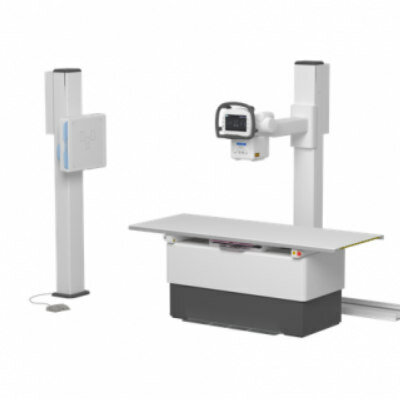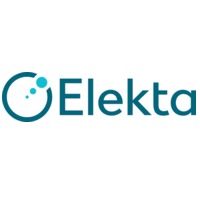Brain Tumor Mechanisms Revealed with MR Spectroscopy
By MedImaging International staff writers
Posted on 14 Aug 2013
Brain tumor researchers have been using novel imaging technology to peek into the brain to determine whether a specific drug therapy may be effective at treating these particularly resistant brain tumors.Posted on 14 Aug 2013
With this new technique, an investigator from Winship Cancer Institute of Emory University (Atlanta, GA, USA) and her team has been awarded a USD 4 million grant from the US National Cancer Institute (NCI; Bethesda, MD, USA).

Image: Magnetic resonance spectroscopy imaging (MRSI) can show residual glioblastoma tumor after surgery. Researchers plan to use the technique to assess the effectiveness of drugs against glioblastoma (Photo courtesy of the Winship Cancer Institute of Emory University).
Glioblastoma is the most aggressive form of primary brain tumors. Clinicians have tried for a long time to develop new therapies for this disease, but only gradual progress has been achieved. Conventional imaging modalities such as magnetic resonance imaging (MRI) and computed tomography (CT) scans do not effectively illustrate what is occurring within the brain and within the tumor of an individual being treated with radiation and chemotherapy. “Right now, I have a patient who is doing great and exercising a lot, but the recent MRI has demonstrated possible progression,” said Dr. William Read, a medical neurooncologist at Winship Cancer Institute of Emory University.
That is one reason why work headed by Winship investigator Dr. Hyunsuk Shim and her colleagues, neurosurgeon Dr. Jeffrey Olson, and radiation oncologist Dr. Hui-Kuo Shu, recently attracted a five-year grant from the NCI. “This is huge,” noted Dr. Olson. “It lets us see something we otherwise couldn’t see, something that can help us make best decisions for our patients. Glioblastoma is just an awful disease, and anything that can lighten the burden is tremendously important. No one else is doing anything close to this.”
The U01 grant from the NCI also places Winship into an exclusive network of NCI-designated cancer centers that studies quantitative imaging methods to measure tumor response to therapies in clinical trial settings. The Quantitative Imaging Network, which now includes 16 cancer centers with the addition of Winship into its ranks, is awarded through a highly selective US National Institutes of Health (NIH; Bethesda, MD, USA) peer review process.
The imaging technique that the Winship team is developing to quantitatively evaluate how glioblastoma patients are responding to therapies is magnetic resonance spectroscopic imaging (MRSI). Dissimilar to standard MRI, which only provides structural data on the tumor and surrounding brain, MRSI can look further into the tumor to identify alterations in its metabolism, which may indicate how fast a tumor is shrinking, growing, or dying.
Dr. Shu added, “We are just not making enough progress in this disease. I think many new therapies have been disappointing when tested on trials because there is no selection for patients that are more likely to benefit. The use of MRSI in this project is our attempt at finding a way to better tailor therapy for individual patients depending on their treatment response.”
Their study centers specifically on vorinostat, a histone deacetylase (HDAC) inhibitor, which has the ability to alter the structure of tumor DNA and change cancer metabolism. This drug is FDA-approved for use in cutaneous T-cell lymphomas but has not been shown, to date, to be effective at treating glioblastomas. Using MRSI, investigators will be able to gauge the levels of eight different, potentially significant metabolites within the tumor and surrounding brain, which they believe, in turn, will let them know whether vorinostat is working.
Whereas MRSI is not really new, the technology used on this study represents the latest development in the field and will allow clinically useful whole brain scanning at resolutions that are not achievable by commercially available systems. Furthermore, their research will utilize Velocity AI, an imaging archival and registration system that was developed by Drs. Tim Fox and Ian Crocker of Emory’s department of radiation oncology, co-investigators on this study. This Emory-developed system will provide quantitative assessment of MRSI in the context of standard MRIs that will also be gathered as part of the standard follow-up for these glioblastoma patients.
“While we are testing whether MRSI can predict response to vorinostat, our hope is that this technique could be used to assess response to other drugs besides vorinistat,” Dr. Shim said. “It is better to figure out as early as possible which patients a given drug is working for.”
Having the capability to utilize more sophisticated imaging technologies is important, however, this will not make a significant difference in patient care unless these techniques can be readily transferred across institutions. Therefore, another important part of their study is to be able to demonstrate that MRSI can be reproducibly obtained across sites. The Emory team has therefore recruited researchers from Johns Hopkins University (Baltimore, MD, USA) to participate in this study. Through this partnership, they hope to demonstrate that this imaging technology can be effectively circulated for use at other sites.
Related Links:
Winship Cancer Institute of Emory University
Quantitative Imaging Network
Johns Hopkins University














